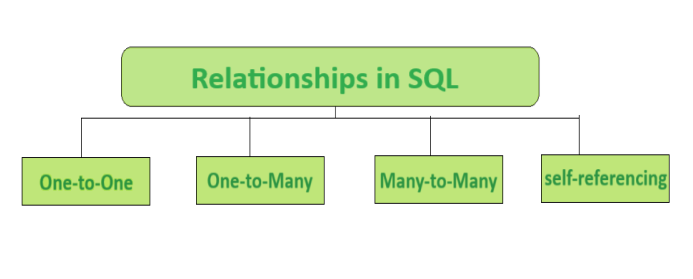Relationships in SQL - One-to-One, One-to-Many, Many-to-Many.
- Mohamed Soliman

- Dec 29, 2024
- 2 min read
Relationships in SQL tables define how tables are connected to one another. Building relationships in tables helps to organize and link data across multiple tables. Creating relationships among tables provides efficient data retrieval and maintenance maintenance.
In this article, we will learn about relationships in SQL, and look at its types like one-to-one, one-to-many, many-to-many, etc. We will provide the syntax and examples to understand relationships and their types.
Relationships in SQL Database
Relationships in SQL
Relationships in SQL refer to the associations or connections between tables in a relational database. These relationships are established using foreign keys, which are columns in a table that refer to the primary key in another table. Relationships help organize and structure data, allowing for efficient data retrieval and maintaining data integrity.
Type of Relationships in SQL

1. One-to-One Relationship
Definition: Each record in Table A is associated with one and only one record in Table B, and vice versa.
Setup: Include a foreign key in one of the tables that references the primary key of the other table.
For example: Tables users and user_profiles, where each user has a single corresponding profile.
2. One-to-Many Relationship
Definition: Each record in Table A can be associated with multiple records in Table B, but each record in Table B is associated with only one record in Table A.
Setup: Include a foreign key in the "many" side table (Table B) that references the primary key of the "one" side table (Table A).
For example: Tables departments and employees, where each department can have multiple employees, but each employee belongs to one department.
3. Many-to-Many Relationship
Definition: Each record in Table A can be associated with multiple records in Table B, and vice versa.
Setup: Create an intermediate table (also known as a junction or linking table) that contains foreign keys referencing both related tables.
For example: Tables students and courses, where each student can enroll in multiple courses, and each course can have multiple students.
Summary
From the preceding all examples we have learned Relationships in SQL Database. I hope you understand it.









Comments